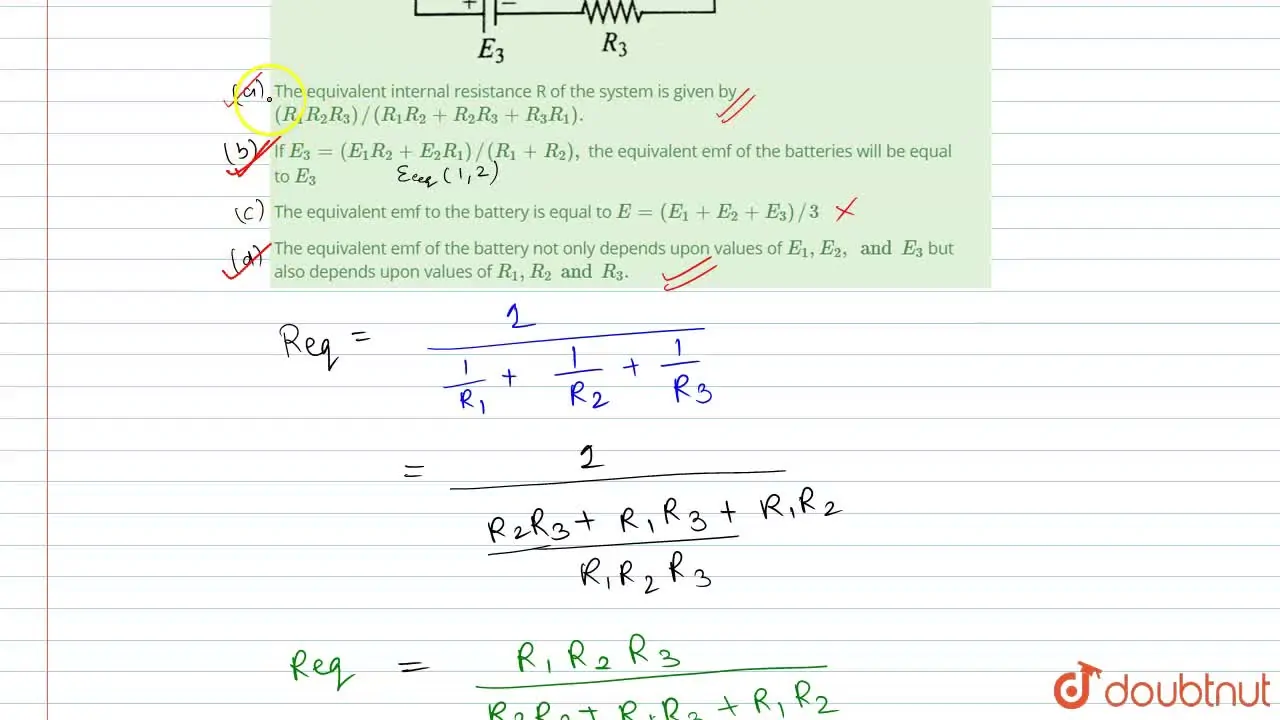For the batteries shown in fig. R1,R2andR3 are the internal resistance of E1,E2,andE3, respectively Then, which of the following is / are correct?
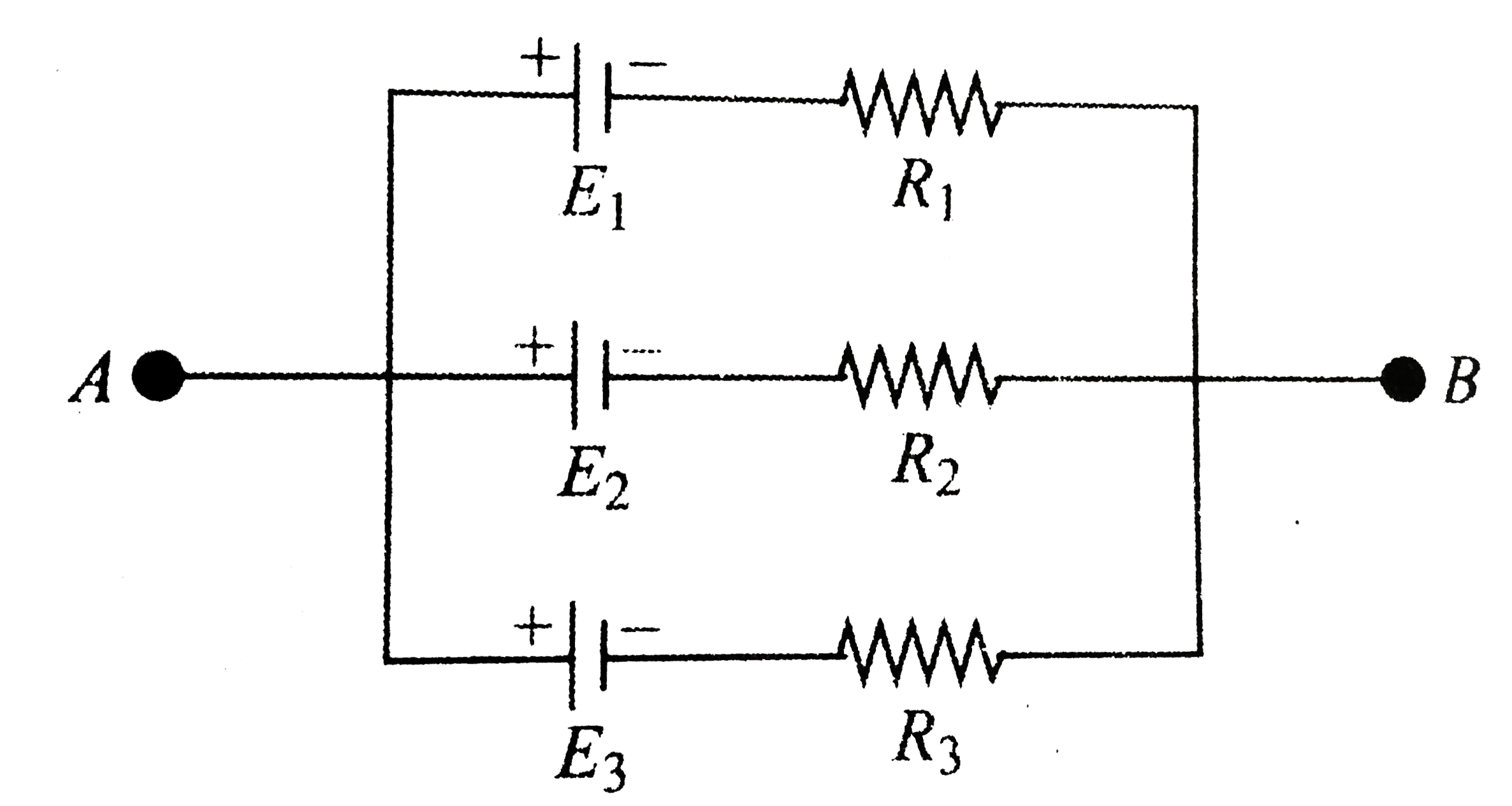
The equivalent internal resistance R of the system is given by (R1R2R3)/(R1R2+R2R3+R3R1).
If E3=(E1R2+E2R1)/(R1+R2), the equivalent emf of the batteries will be equal to E3
The equivalent emf to the battery is equal to E=(E1+E2+E3)/3
The equivalent emf of the battery not only depends upon values of E1,E2,andE3 but also depends upon values of R1,R2andR3.
The correct Answer is:A, B, D
We know that the equivalent internal resistance is
Req=1∑12=11R1+1R2+1R3
=R1R2R3R1R2+R2R+3+R3+R1
and the equivalent emf is
Eeq=∑ER∑1R=E1R1+E2R2+E3R31R1+1R2+1R3
Use E3=E1R2+E2R1R1+R2 to get
Eeq=E1R2+E2R1R1+R2=E3
Related Playlists
- BOOK - CENGAGE PHYSICS ENGLISHCHAPTER - ELECTRIC CURRENT AND CIRCUITEXERCISE - Comprehension35videos
ELECTRIC CURRENT AND CIRCUIT
- BOOK - CENGAGE PHYSICS ENGLISHCHAPTER - ELECTRIC CURRENT AND CIRCUITEXERCISE - Interger8videos
ELECTRIC CURRENT AND CIRCUIT
- BOOK - CENGAGE PHYSICS ENGLISHCHAPTER - ELECTRIC CURRENT AND CIRCUITEXERCISE - Single Correct72videos
ELECTRIC CURRENT AND CIRCUIT
- BOOK - CENGAGE PHYSICS ENGLISHCHAPTER - ELECTRIC CURRENT & CIRCUITSEXERCISE - Kirchhoff s law and simple circuits15videos
ELECTRIC CURRENT & CIRCUITS
- BOOK - CENGAGE PHYSICS ENGLISHCHAPTER - ELECTRIC FLUX AND GAUSS LAWEXERCISE - MCQ s38videos
ELECTRIC FLUX AND GAUSS LAW
Similar Questions
A circuit consists of three bateries of emf E1=1V,E2=2V and E3=3V and internal resistance 1Ω,2Ω and 1Ω respectively which are connected in parallel as shown in figure. The potential difference between points P and Q is
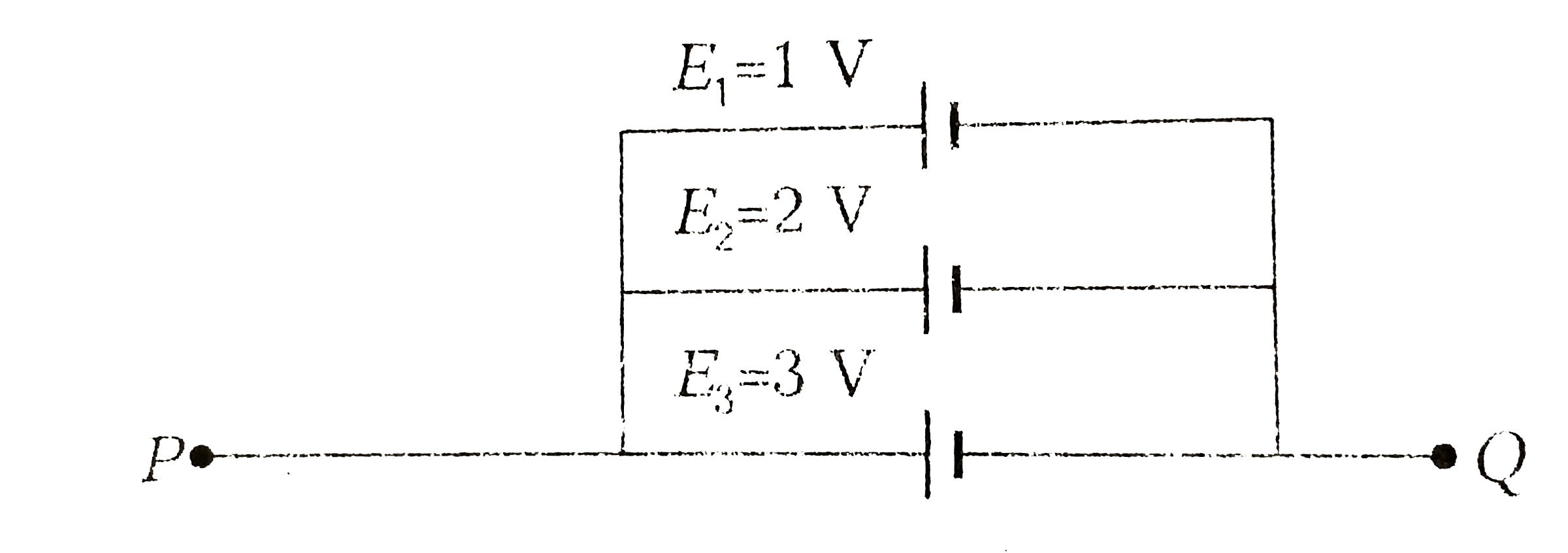 View Solution
View SolutionTwo batteries of emf E1andE2(E2>E1) and internal resistances r1andr2 respectively are connected in parallel as shown in figure.
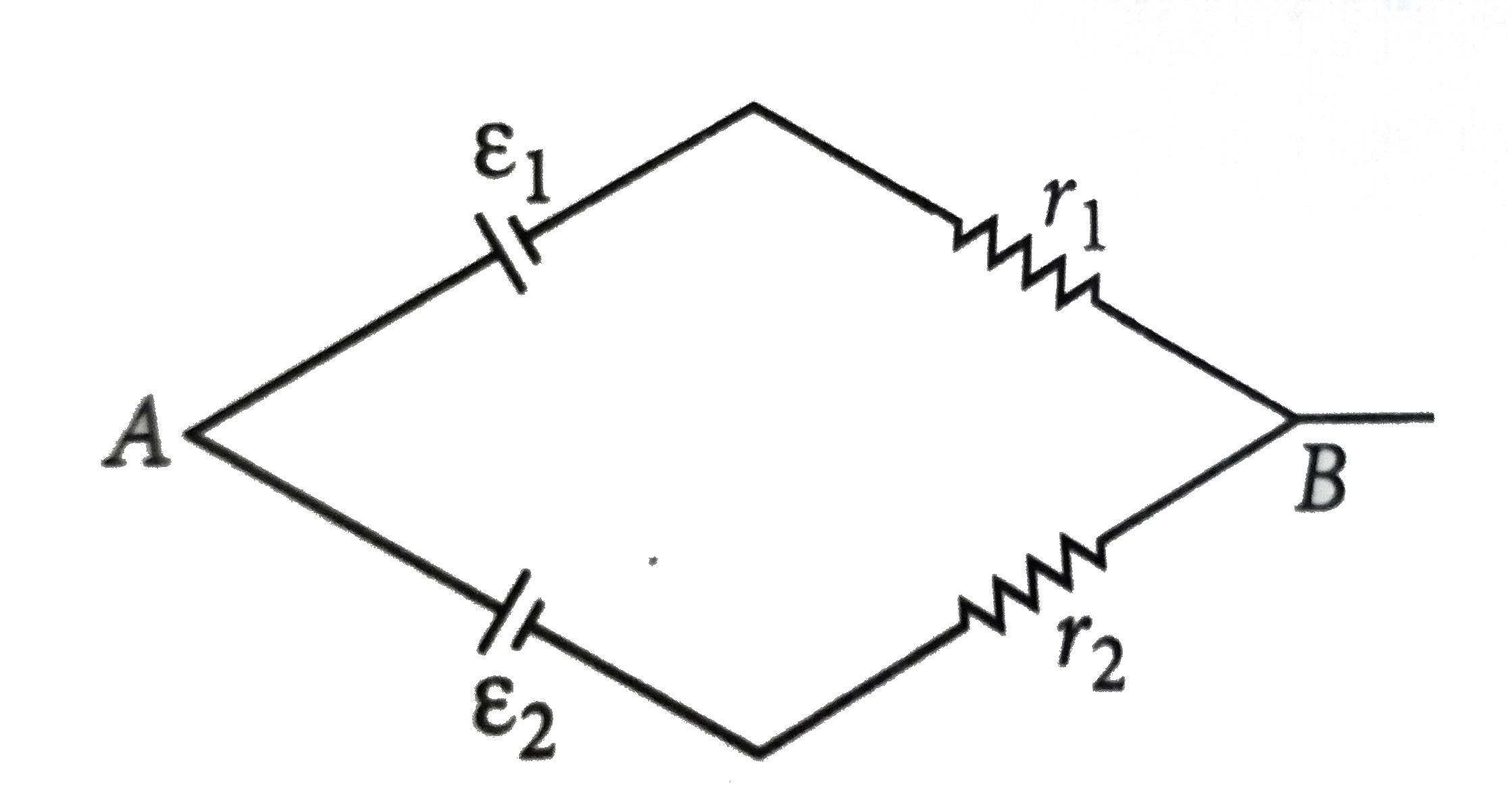 View Solution
View SolutionA student carries out an experiment and plots the V−I graphs of three samples of nichrome wire with resistances R1,R2andR3 respectively, (Fig. 3.41). Which of the following is true ?
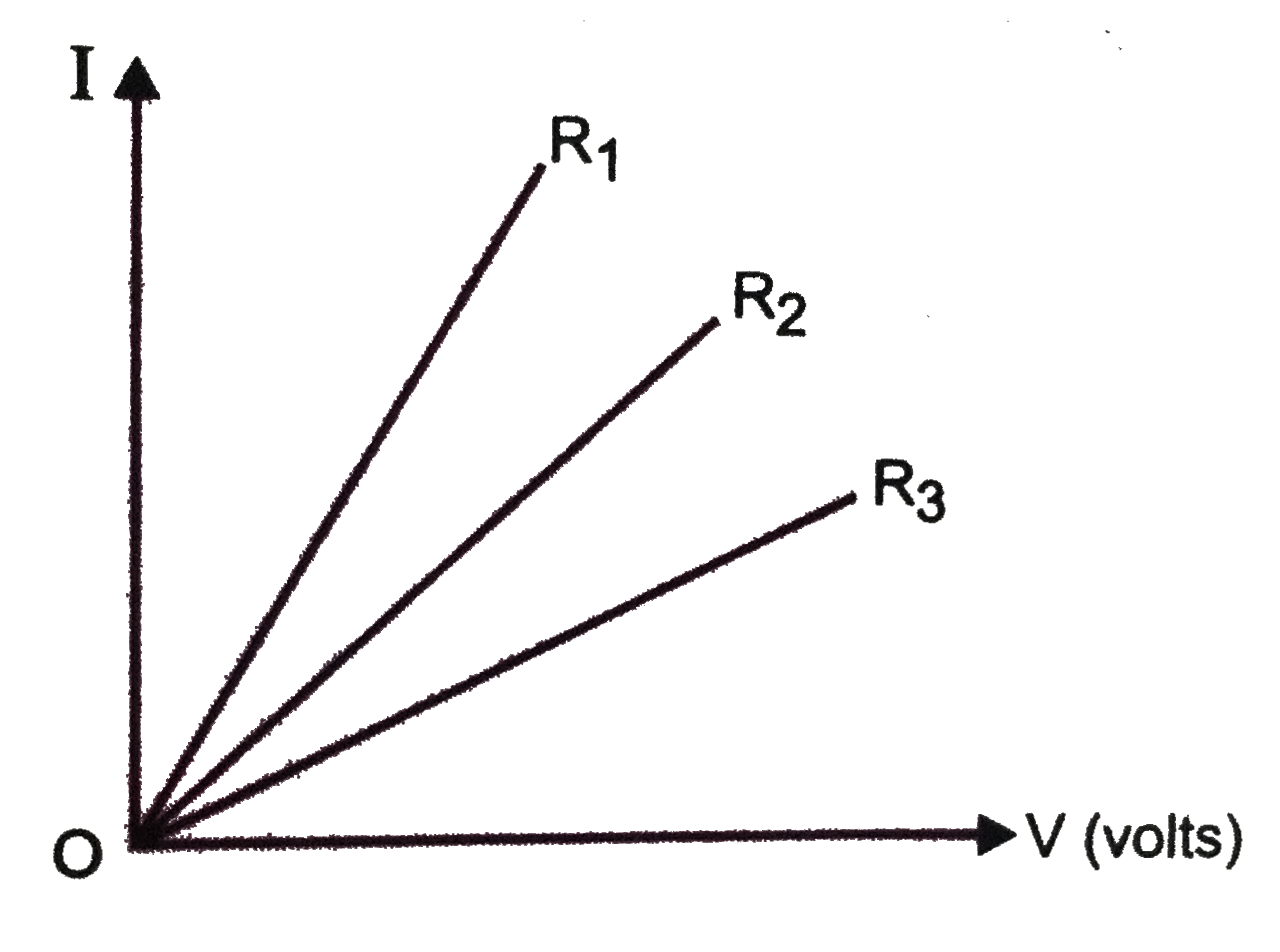 View Solution
View SolutionIn the circuit shown in figure below, E1 and E2 are batteries having emfs 4.0 V and 3.5 V respectively and internal resistance 1Ω and 2Ω respectively. Using Kirchhoff.s laws, calculate currents : I1,I2 and I3.
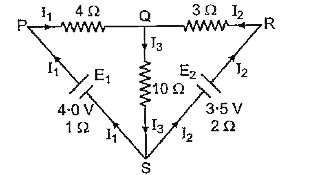 View Solution
View SolutionIn the situation shown, resistance R1,R2 and R3 are in the ratio 3:2:1 , then
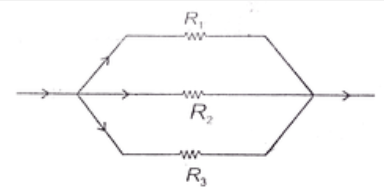 View Solution
View SolutionFind the emf (V) and internal resistance (R) of a single battery which is equivalent toa parallel combination of two batteries of emf V1 and V2 and internal resistances r1 and r2 respectively, with polrities as shown in figure
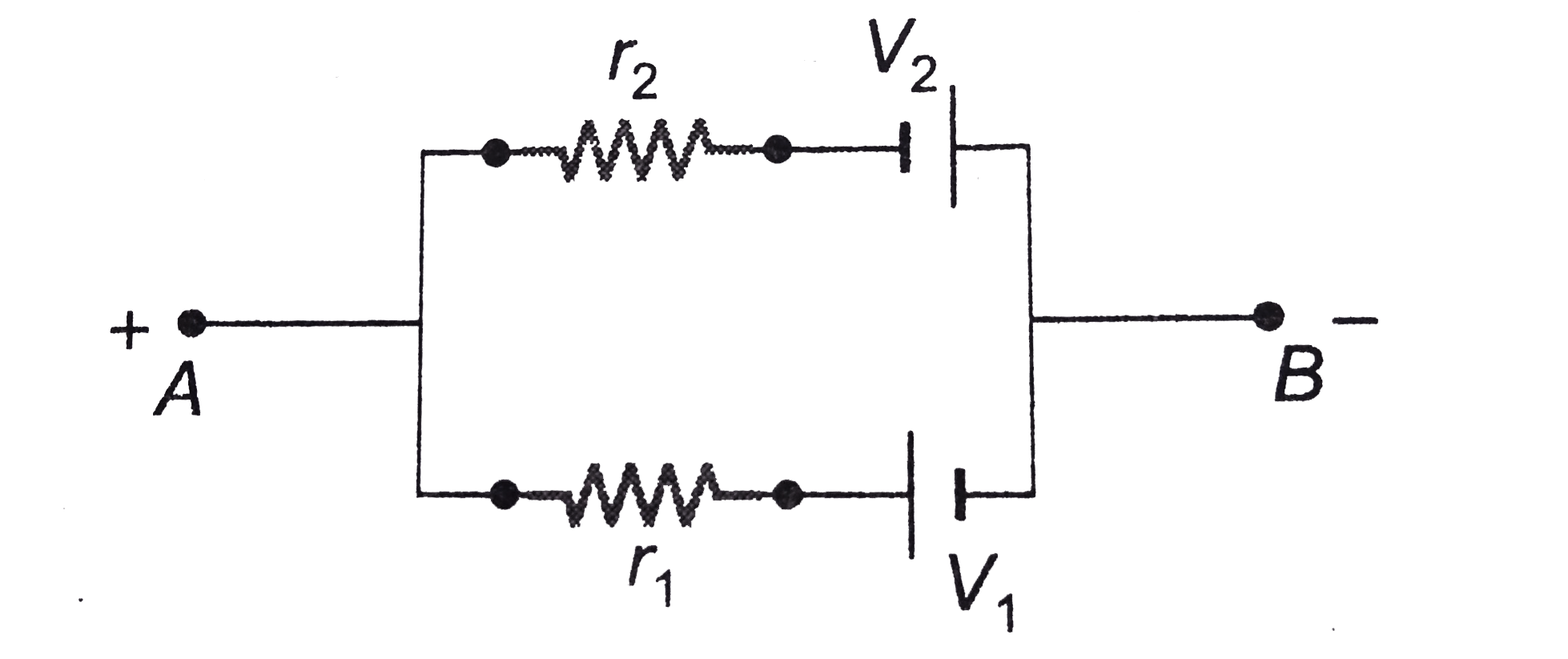 View Solution
View SolutionTwo batteries of emf e1ande2 having internal resistance r1andr2 respectively are connected in series to an external resistance R. Both the batteries are getting discharged. The above described combination of these two batteries has to produce a weaker current than when any one of the batteries is connected to the same resistor. For this requirement to be fulfilled
View SolutionTwo batteries of emf E1 and E2(E2>E1) and internal resistance r1 and r2 respectively are connected in parallel as shown in the figure. Then, which of the followings statements is correct ?
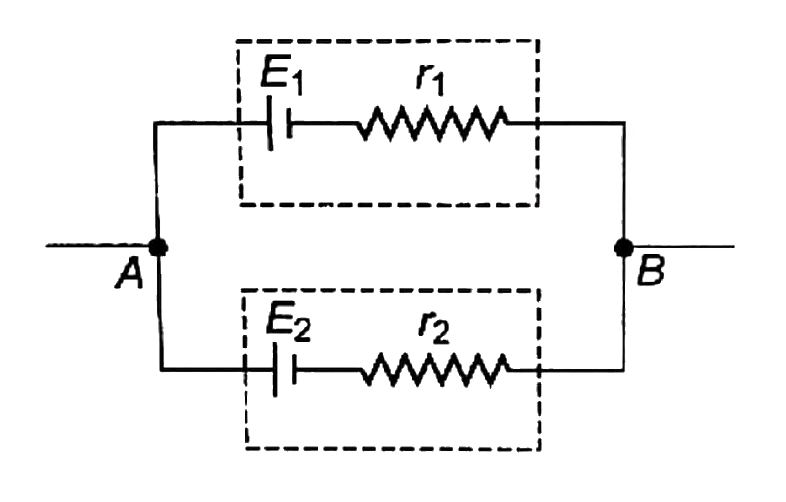 View Solution
View SolutionFind the emf (V) and internal resistance (R) of a single battery which is equivalent toa parallel combination of two batteries of emf V1 and V2 and internal resistances r1 and r2 respectively, with polrities as shown in figure
 View Solution
View SolutionConsider the circuit shown in fig.
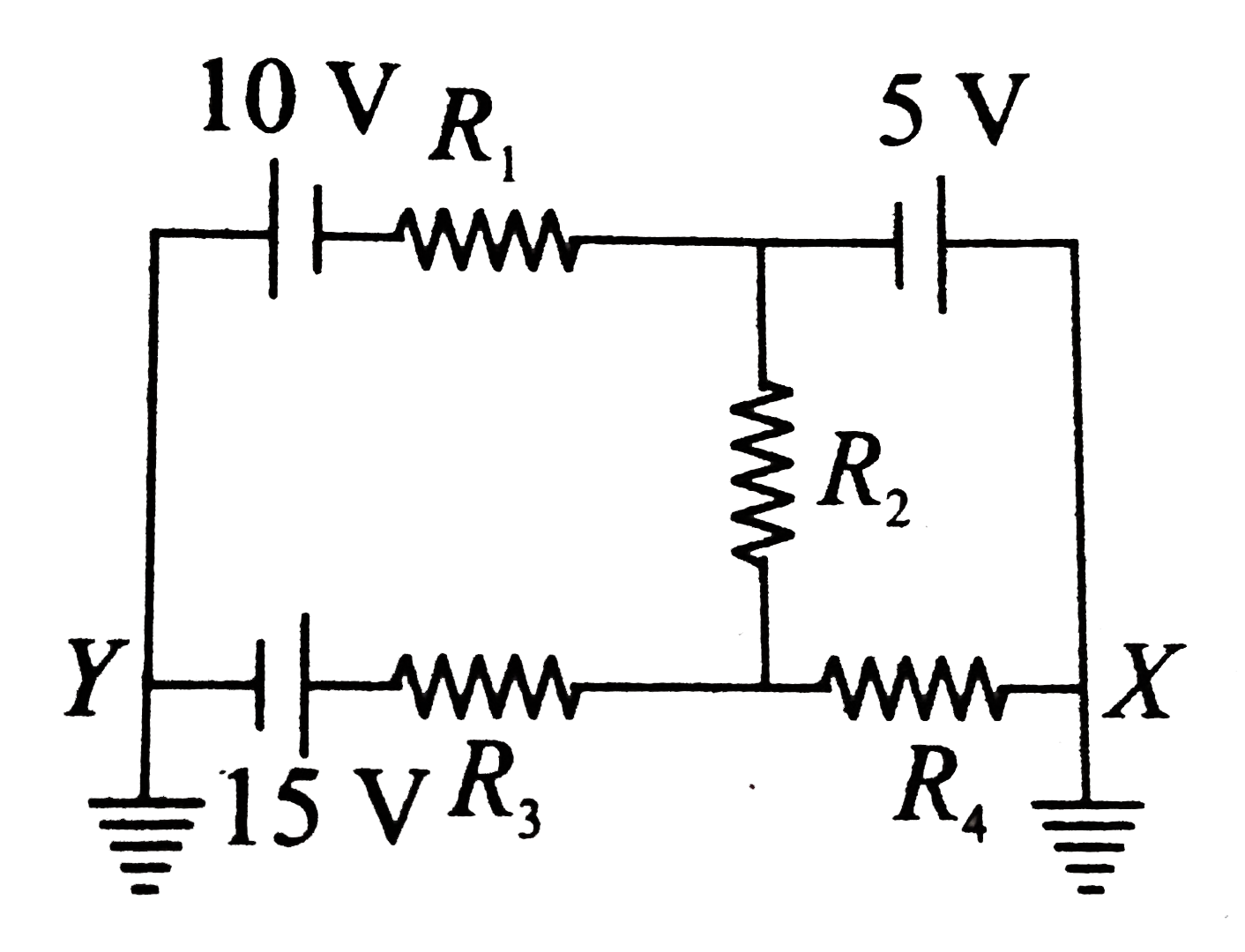
Assuming R1=2Ω, current passing through resistance R1 isView Solution

